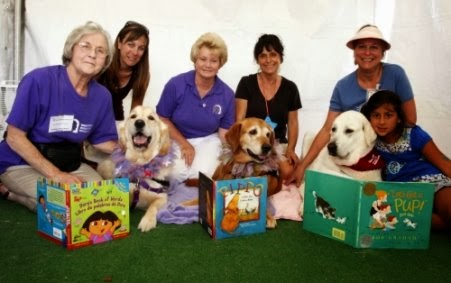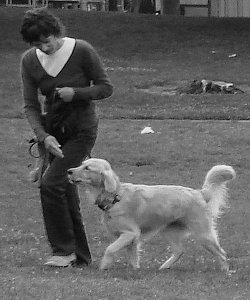Literacy Week
Kids we love your letters!
Thank you!
Animal Assisted Therapy and Children
Tales for Paws (children reading to dogs)
Reading to dog teams visit children in libraries and schools. Why read to dogs? Children who express a difficult time reading often simply are nervous and self-conscious about making mistakes in front of people; this makes it hard to concentrate on the task at hand: reading. This fear also causes children to dread reading, especially in front of their peers and adults. Reading to dogs helps to lessen the dread and make reading an enjoyable activity. Dogs offer unconditional love; they are not intimidating or judgmental. The perfect reading companion!
TFP teams consisting of a registered and trained therapy dog and handler meet with children, ages 5 to 12, to share books and fun, usually in a library or classroom setting. We suggest age appropriate books for the child to read to the animal. Each child spends about 10 to 20 minutes reading with a dog: a few minutes to get acquainted, a sizable amount of time reading. Children reading to TFP dogs number from one to a group of ten, depending on the setting.
During the reading time, the child usually sits on the ground with the dog and the dog’s handler. Many children who read to larger dogs lie against them. Some of the smaller dogs will put their heads on children’s laps. Some dogs may choose to sit next to the children and simply “follow along” with the story.
Children can improve their reading two to three grade levels in a short period of time when participating on a one to one basis in the Tales for Paws program. The handler serves as a way for the dog to communicate: asking questions and making points on pronunciation and comprehension. Within minutes of starting to read to the dog, most children pet the dog, start to relax and forget to think about how “hard” reading can seem. In fact, most participants find reading to be fun and eagerly await their next reading session with their TFP reading dog team.
In recent years, therapy dogs have been enlisted to help children overcome speech and emotional disorders. The concept has widened to include other species, such as therapy cats, therapy rabbits, therapy birds and so on.
Research with therapy animals indicates that children with low self-esteem are often more willing to interact with an animal than another person. Further, during such interaction they are inclined to forget about their limitations. There are also physiological benefits to interacting with animals, including increased relaxation and lower blood pressure.


